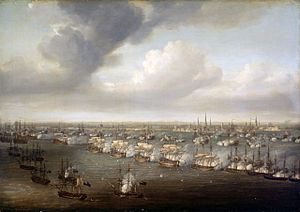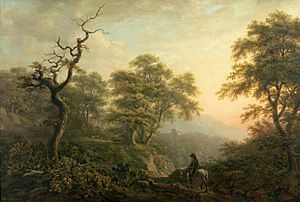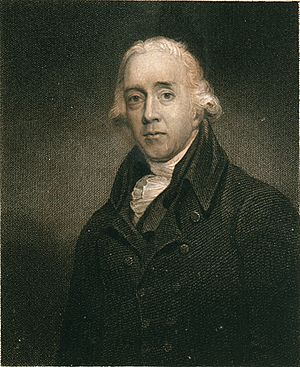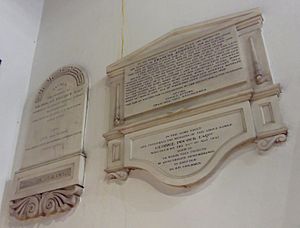Nicholas Pocock facts for kids

Nicholas Pocock (born March 2, 1740 – died March 9, 1821) was an English artist. He is famous for his many detailed paintings of naval battles. These battles happened during the time when large sailing ships were used in wars, known as the age of sail.
Early Life and Sea Adventures
Pocock was born in Bristol in 1740. His father was a sailor, and Nicholas followed in his footsteps. By the time he was 26, he was the captain of a merchant ship. A merchant ship carries goods for trade. During his time at sea, he became a very good artist. He would draw ships and coastal scenes in his log books using ink and wash.
Becoming a Famous Painter
In 1778, Pocock's boss, Richard Champion of Bristol, faced money problems. This was because the American Revolutionary War made it hard to trade across the Atlantic Ocean. So, Pocock stopped sailing and became a full-time painter. His first artworks were shown at the Royal Academy in 1782.
Later that year, Pocock was asked to create paintings about George Rodney's victory at the Battle of the Saintes. In 1789, he moved to London. There, his fame grew, and he met many important people. He was a favorite of Samuel Hood. King George III even named him the "Marine Painter" to the King. This meant he was the official artist for naval scenes.

Pocock put a lot of effort into researching his naval paintings. He would talk to people who had seen the battles. He asked them about the weather, wind, and where the ships were. He also drew detailed plans of the battles and made sketches of individual ships. He even saw the Glorious First of June battle in 1794 himself. He was on board the frigate HMS Pegasus.
Besides his large oil paintings of naval battles, Pocock also made many watercolours. These showed scenes of the coast and ships.
Pocock's Family
Pocock married Ann Evans in Bristol in 1780. They had eight children together. His son Isaac became an artist and a writer for plays. His second son, William Innes Pocock, was a Royal Navy Officer and also a marine artist. Two of his grandsons, Alfred Downing Fripp and George Arthur Fripp, also became artists.
His Final Years
Nicholas Pocock passed away on March 9, 1821. He died at the home of his oldest son, Isaac, in Raymead. This area is in the parish of Cookham, near Maidenhead. He is buried in the church there.



